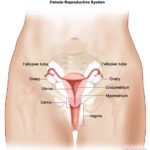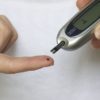Optimum fitness levels form the crux of an athlete’s career graph!
Athletes playing contact sports are expected to be in top physical shape at all times. Any on-field injuries can have an impending effect on their long-term professional growth.
Mohamed Salah, a prolific winger playing for Liverpool suffered a serious groin injury whilst playing a crucial match during his team’s Champion’s League win against Manchester City. As Salah was unable to continue beyond the 52nd minute, the coach and the team physiotherapist called him off the field for a health assessment. Thereafter, Georgino Wjnaldum took his spot for the remaining part of the game.
After Salah’s prognosis, the doctors prescribed HBOT Therapy as a relief measure. The star player is reported to have displayed significant improvement in his health condition after undergoing the therapy. Thereby, proving that initiation of requisite treatment plans such as HBOT can induce rapid acceleration of the recovery process. Salah even posted a picture of him relaxing inside a hyperbaric chamber post his on-field discomfort during the match.
HBOT Therapy or Hyperbaric Oxygen therapy has been gaining momentum as a viable alternative treatment option for sports-related injuries as the procedure is non-invasive in nature and does not warrant physical wear and tear during the treatment process.
What is HBOT Therapy?
The medical fraternity has prescribed HBOT Therapy or Hyperbaric Oxygen Therapy for several decades to provide relief to a host of ailments ranging from Decompression Sickness in Naval Divers, chronic wounds, Sports Injuries such as concussions, Traumatic Brain Injuries (TBI), Sprains, and many more.
Oxygen is the core constituent of HBOT Therapy and has been used as a natural wound healer by physicians over centuries.
On commencement of the therapy, the injured patient is placed in a pressurized cylindrical capsule wherein systemic oxygen is administered at enhanced pressure levels varying between 1.2 am to 5 atm. The pressure levels are approximately three times greater than normal atmospheric pressure.
The pure oxygen dissolving into the blood plasma and other body fluids provide oxygenated blood to the injured tissues of the body, where the blood vessels are damaged, impairing the normal blood flow. The availability of pure oxygen- in the damaged tissues instantly encourages cell repair and eventually hastens the natural wound healing capabilities.
What are the Various Types of Sports Injuries?
Sportspersons playing contact sports such as football, rugby, basketball, etc. are prone to muscle or ligament tears, tendon injuries, bone fractures, joint displacements, spinal injuries, traumatic brain injuries, and many more such ailments that are sustained due to impact, collisions, or falls during high adrenalin games.
These injuries can cause swelling of tissues in the brain, leading to afflictions like Hypoxia or Edema, and also inflict severe distress and pain in other parts of the body. The athletes have to implement requisite treatment measures at the earliest as any delay in medical care can prove to be detrimental for their career prospects.
Is HBOT Therapy Effective in Treating Sports Injuries?
Researchers from the field of hyperbaric science have conducted numerous clinical studies that have unraveled the attributes of HBOT therapy for treating sports injuries.
These studies have involved players from reputed football clubs and their pre-match and post-match assessments have been recorded thereafter.
These trials have revealed that hyperbaric therapy can aid in the recovery of approximately twenty minor sports-related injuries. Observations in three separate case studies have been mentioned herewith:
- Case Study 1: The patient had suffered a strain of the upper insertion in the left hamstring and was declared unfit for a week. After undergoing two sessions of HBOT Therapy, the player was back on the field within three days.
- Case Study 2: In this case, the patient was ailing from Achilles Tendonitis in the left ankle and the prognosis for recovery was pegged at four days. However, the athlete returned to training just a day after undergoing HBOT Therapy.
- Case Study 3: Herein, the athlete had sustained a painful sprain in the left ankle during play and was recommended a three-week break from training. Thereon, the player underwent HBOT Therapy and was able to resume training in a span of four days only!
All the players involved in the above-mentioned case studies were deemed fit to play and no relapse of the aforesaid afflictions was reported in the future. HBOT Therapy is known to stimulate systemic vasoconstriction whilst curbing edema to a great extent.
Today, top players from the biggest sporting leagues such as National Football League (NFL) are opting for HBOT Therapy sessions for pain relief and injury recovery on a regular basis. Sports associations across the nation are investing efforts in a relentless manner in convincing the government to allocate funds for this remarkable treatment in the forthcoming budget.
Currently, due to the ever-growing participation of individuals in the field of sports and recreation, there is an upsurge in the occurrence of sports-related injuries. Therefore, it is essential to adopt the right treatment standards such as HBOT therapy to combat injuries sustained during sporting activities.
![]()









